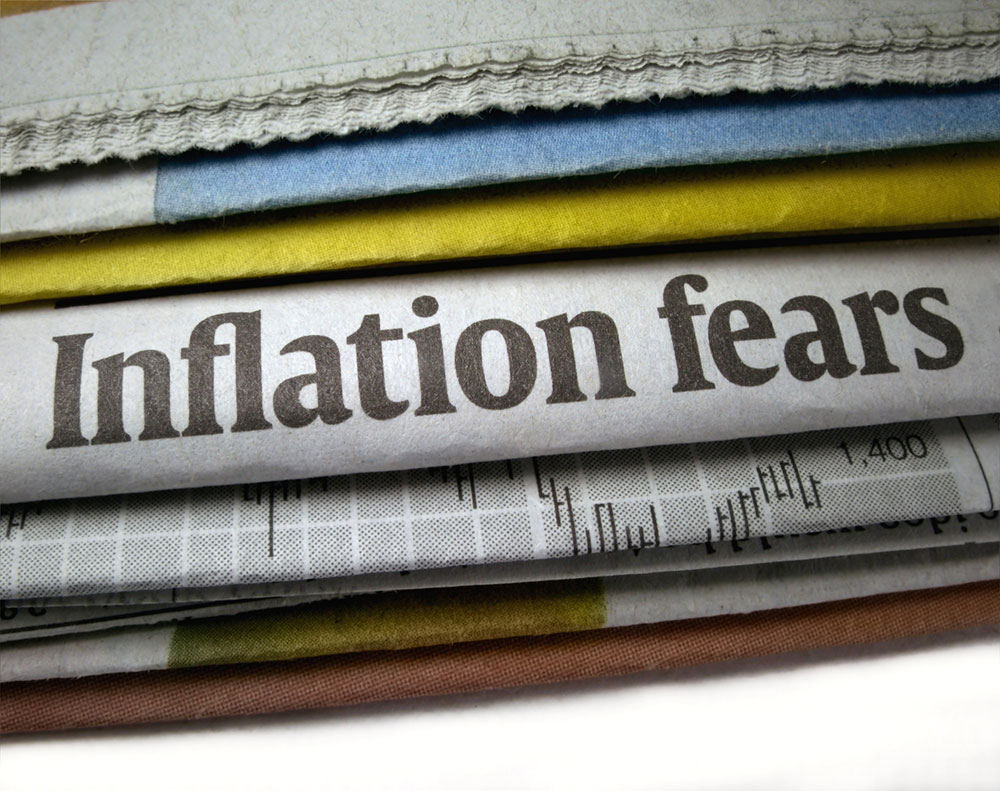How the Stories We Tell About Inflation Have Changed
New research by Rob Voigt looks at how U.S. newspapers have reported on inflation from 1923 to 2025
Get all our news
Linguistically, it’s interesting and challenging to think about measuring complicated discussions about some topic over a long period of time because language is always changing.”
Rob Voigt
IPR computational linguist

In June 1979, the New York Times published photographs of drivers waiting in long lines for gas—stark images of an economy strained by spiking oil prices. A few months later, the newspaper reported that newly appointed Federal Reserve Chairman Paul Volcker told Congress that the American standard of living would have to decline to bring inflation under control.
Volcker ushered in an era of brute-force economics aimed at lowering inflation. Under his leadership, the Federal Reserve took a far more assertive role in managing the U.S. economy, and that legacy continues in news headlines we see today. The Fed still raises interest rates to curb rising prices, as they did in 2022 when inflation climbed after the COVID-19 pandemic.
A working paper by IPR computational linguist Rob Voigt, Northwestern PhD student Qingcheng Zeng, and researchers from Stanford University and the University of Chicago looks at how U.S. newspapers have reported on the causes and effects of inflation over the last century. The study reveals key differences in how newspapers reported on inflation across different economic eras and regions of the country between 1923 and 2025.
“There’s an increasing appreciation for how narratives, or stories, shape people’s expectations or their beliefs about all sorts of things—particularly things that are economically related,” said Alexander Zentefis, a fellow at Stanford’s Hoover Institution and co-author of the study.
It also reveals connections between how the media frames stories about inflation and whether people expect inflation to happen. The researchers find that low-income households are more sensitive to reporting about inflation’s effects on the cost of living and social and political stability. This suggests that low-income households may be more likely to expect prices to rise when newspapers focus on these issues compared to wealthy households, which could influence how they spend money.
That finding speaks to “the potential power or influence of narratives—the way that storytelling about a thing influences how that thing takes shape over time,” Voigt said.
To understand newspapers’ inflation narratives, or the ways they explain the causes and effects of inflation, the researchers used a large language model to analyze 4.2 million sentences from U.S. newspapers published between January 1923 and January 2025. The sentences came from news stories published in national newspapers like the New York Times and Wall Street Journal, along with local and regional newspapers.
The researchers sorted each inflation narrative from the sentences into 19 categories—eight causes and 11 effects of inflation. They analyzed the University of Michigan's Surveys of Consumers for data on inflation expectations and the Bureau of Labor Statistics Consumer Price Index for data on actual price changes.
“Linguistically, it’s interesting and challenging to think about measuring complicated discussions about some topic over a long period of time because language is always changing,” Voigt said.
Before the 1980s and especially during the Great Depression, newspapers largely gave fiscal explanations—government spending and tax policies—for inflation. From the 1980s to today, monetary narratives that emphasized the Federal Reserve’s role as a driver of inflation appeared more often in the media’s economic coverage.
“What the Federal Reserve will do as a consequence of inflation became a much more prominent narrative in the newspapers when it comes to the effect side of inflation,” Zentefis said of the post-Volcker era in the 1980s.
The researchers also saw differences in reporting across regions in the United States. Northern newspapers tended to emphasize federal fiscal policy as a cause of inflation, while newspapers in the South focused on supply issues as the cause of spikes in prices. Newspapers in major cities wrote more about how geopolitics and the Fed influenced inflation, while rural publications stressed interest rates and the cost of living.
The research has direct implications today, as many worry that the current administration's tariffs could increase prices. Zentefis says that while they can’t make causal claims about how media coverage impacts people’s expectations about inflation, they do see a link between the stories the media reports and how people think about the future of the economy. The study also suggests that the Fed’s messages to the public are not the only way people digest the information it shares about the economy.
“It's also going to be what people read in the newspaper and how the newspaper frames that communication,” he said.
Voigt says this research method is a potential model for future studies looking at how people talk about the causes and effects of other important and widely debated social and economic issues. He compares the relationship people have with language to fish swimming in water.
“I think that a lot of times we don’t see the water,” Voigt said. “We don't notice the impacts of language all around us. This study provides one more example of how language can both reflect and influence important processes in the real world—in this case, economic expectations and the policy decisions that may follow.”
Rob Voigt is assistant professor of linguistics and an IPR fellow.
Photo credit: iStock
Published: June 24, 2025.


